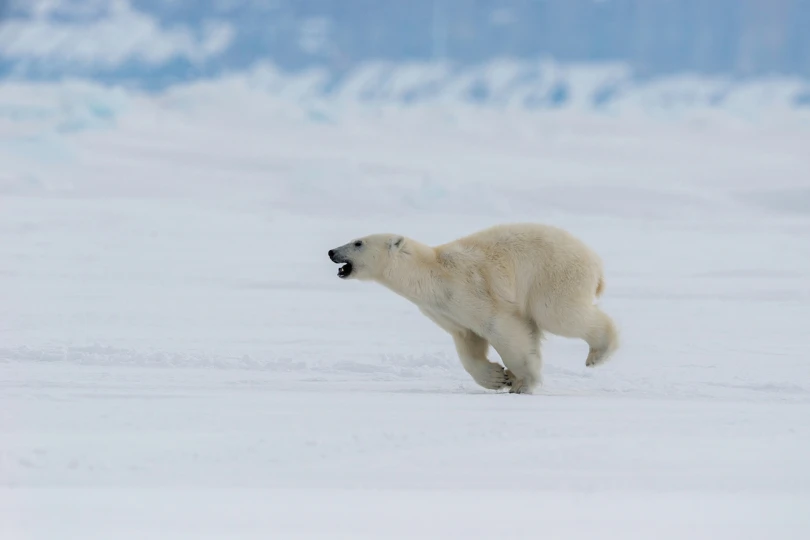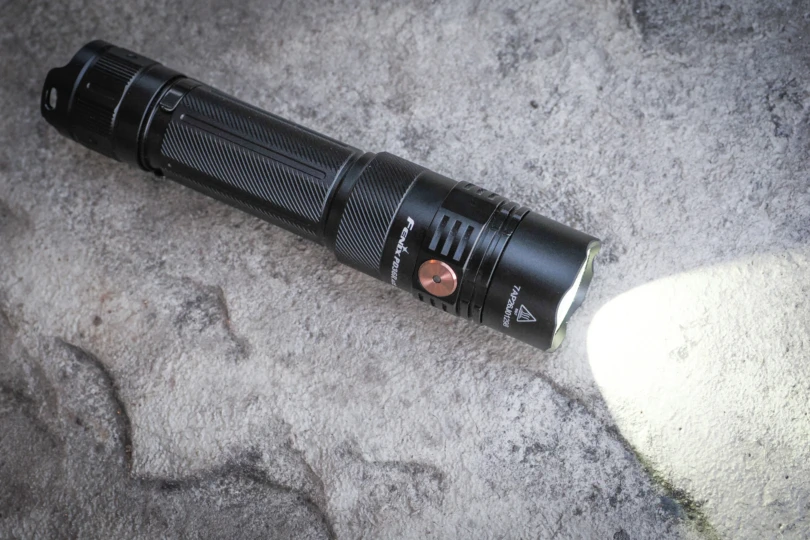Fly fishing rods are constantly changing with improvements in construction, fly lines, reels, and technology. These are the best new rods of the year.
Every year, there’s a new list of the best rods out there. Without getting your hands on them, it’s a serious task to weed through the options and find the rod that best suits your needs.
In our annual hunt to find the best fly rods on the market, we took to the water, went to the International Fly Tackle Dealer Show, asked guides, scoured the internet, and read every tech spec and review to bring you our list of the fly fishing rods we think measure up for the coming year.
Obviously, there are a lot of opinions involved in what it takes to be the best, and if you visit six different sites, you’ll get six different lists.
That being said, here are our recommendations for 2022. Feel free to click the rods that interest you below, or scroll through to see the entire lineup:
- Best Overall
- Best Freshwater
- Do-It-All Series
- Best Spey
- Best for Saltwater
- Best Starter Package
- Best Budget
- Best Midlevel Rod
- Best Tenkara
The Best Fly Rods of 2022
Best Overall: Orvis Helios 3 Blackout
Released in July 2021, the Orvis Helios 3 Blackout ($998) missed many of the “best of” lists for last year. With almost a year of it being in public hands, there’s been some resounding praise of this specialized rod.
The 9’5″ 5-weight version of the series came out with a pile of hype, and so far it has measured up.
With its target demographic being drift boat fisherman, it has become a favorite for guides who spend long days afloat. It isn’t hard to find glowing reviews as fishermen have sung its praises for having the power and accuracy of a 10-foot rod while still casting with the ease of a 9-footer.
The rod is incredibly light in hand yet has a noticeably stiffer feel all the way through to the tip. That rigidity, along with those extra inches, is likely the most significant contributor to the power and accuracy fishermen are experiencing from the boat. When it comes to mending, again, that stiffness allows you to easily direct line for the most realistic float.
Our Hunt & Fish Editor Nicole Qualtieri fished with this rod in 2021, and here’s what she had to say about it:
“The Helios 3 Blackout might be my favorite rod I’ve fished with to date. It’s zippy, fun to cast, and accurate. Plus, this balance of light and fast makes the fight really fun when a fish is on. The 9’5” length is great for fishing in drift boats or off a paddleboard.
“But I still found myself reaching for it when wading. A lot of my other rods gathered dust; the Blackout did not. Even my guide friends loved it, and I could see a smidge of jealousy in their trout-lovin’ eyes. A lot of my other rods gathered dust last year, mostly because the Blackout did not. “
The only real notable drawback is the decision not to integrate a hook keep. It seems like an odd omission since it’s such a small component. I don’t know many people who actually use them. But for those who do, it might be frustrating to invest in such a high-end rod and be missing that simple piece.
Best Freshwater: Scott – Centric
Continuing the trend of producing a rod that feels shockingly light in hand, Scott has changed things up with the Centric ($945). This rod is a prime example of a company that tried something, realized it didn’t work, and changed course.
The Centric rods were originally constructed with Scott’s Carbon Web Technology. This advancement made its Sector series very popular.
Really, the hope was to mimic the power of the Sector for big freshwater applications. Instead, the company quickly learned that the carbon web tech didn’t improve performance in this application and wasn’t worth the added weight. The team scrapped it and moved forward in a different direction.
Concentration shifted to improving its resin and carbon technology, bringing forth the development of ARC 2. This next phase of its carbon construction is 35% lighter than the original ARC tech, which was already crazy light.
The result was a rod that is faster, stronger, lighter, and more accurate for big freshwater applications.
A common critique of the Centric is that it falls short on small water — or better yet, it struggles to fall short. Granted, it wasn’t designed for close casts on tiny creeks, but it’s worth noting. If little mountain streams are where you’re headed, you might want to consider a different rod choice. This one might have a bit too much bang.
I’d recommend something along the lines of the F-Series, specifically designed for those tight spaces.
Check Price at Trident Fly FishingCheck Price at Scott Fly Rod
Best Do-It-All Series: Sage R8 Core
The R8 Core Series ($1,050) from Sage was just released on April 5. I was able to get my hands on the R8 Core Series last month and get a feel for what these fast-action multiapplication rods have to offer.
Unsurprisingly, at first glance, the R8 Core has the quality we’ve all come to expect from a Sage product. It’s clean, sleek, and has a balanced feel.
Though this fly rod is targeted at freshwater fishermen, the 990-4 actually took home the award for Best Saltwater Fly Rod at the 2022 IFTD Show. I think we’ll see the upper-weighted-end of this series both throwing streamers for salmon and pike, and wandering into the salt flats for bonefish and permit.
Acknowledging my bias as a mountain carp fisherman, I think the star of this lineup is the 9’6″ 5-weight. I don’t tend to extend much past the 9-foot mark, but this rod seems to have the responsiveness and control you might expect from a shorter rod. And like the Helios, this makes for a helluva boat rod.
Essentially, whatever your preferred stretch of water, there’s a rod in the Sage R8 Series to fit your needs.
The only real exception would be if your main requirement of a fly fishing rod is big power. If that’s the case, save some cast fatigue and go with something like a Sage Salt HD.
Check Price at Trident Fly FishingCheck Price at Farbank
Best Spey: Sage Trout G5
Another Sage rod on the list and another award winner from the 2022 IFTD Show. The Sage Trout G5 ($650) took home the award for Best Spey Rod, and for good reason. The growing popularity of spey casting led Sage to reconfigure the G5 to accommodate the most recent advances in spey lines available on the market.
The G5 is lightweight and constructed with a narrower shaft than the previous ideation. Guides have praised the noticeable reduction in fatigue after a long day of throwing streamers, as well as noting the power it has relative to its lightweight feel.
When you start talking about rods that reach past the 11-foot mark, responsiveness becomes an issue. Sage described the G5 as being a highly responsive rod at lengths at and past that, and the sentiment was echoed by the public.
Check Price at AmazonCheck Price at Trident Fly Fishing
Best Saltwater Rod: G. Loomis NRX+ FLY T2S
With 5 line weights, all at 8’6″ long, G. Loomis introduced a powerhouse series with the NRX+ FLY T2S ($895). Constructed with G. Loomis’ Multi-taper Design, this rod is strong where it needs to be and light where it can be. Boasting crazy fast line speed and enough power to overcome unpredictable ocean fishing conditions, this rod is still shockingly sensitive and surprisingly light.
Breaking from the one-piece saltwater fly rod trend, this two-piece is what G. Loomis calls its “tournament” configuration. The draw of one-piece rods is both weight reduction and improved performance. However, they can be brutal to transport.
The NRX+ FLY T2S series is touted as having all the performance of a one-piece rod, with the added benefit of portability. Anglers seem to agree with those claims. Though, it may be a turnoff to those who’ve seen the benefits of single-piece performance.
Unless you live on the beach, you’re going to need to travel with the thing, and a 9-foot-long tube is a pain to move about with. I think this rod gives you the best of both worlds, without sacrificing performance.
Check Price at Trident Fly FishingCheck Price at G. Loomis
Best Starter Package: Bozeman Flyworks – The Gold Standard
The Gold Standard Starter Kit ($356) from Bozeman Flyworks is one of the few truly complete packages to get you going. This setup is perfect for kids and adults who want to test the waters without investing a huge sum of money to do so.
The big difference between this kit and other starter kits is quality. The company’s direct-to-consumer model means you get a higher quality product at a far lower price point. The rod is matte and looks sleek. The reels are fully CNC’d and have an adjustable drag, something you might not find on a lower-end kit.
This high-quality package is available with several different options to fit you and your home water. It includes a rod, reel, fly line, leaders, tippet, a fly box, a rod case, a reel sleeve, and even the option to add a net. The only item you have to purchase outside of this kit is a few flies.
Bozeman Flyworks also offers some simple walk-throughs for those just getting started.
Check Price at Bozeman Flyworks
Best Budget: Echo Carbon XL
The Echo Carbon XL ($180) is an excellent choice for anyone who wants to do some serious fishing without breaking the bank. The consistent review from the pros is that it casts like a much higher-priced rod.
This Carbon XL has a moderate to moderate-fast action that loads and casts easily for all skill levels. It makes for a great starter rod, a decent backup, or just a solid pick as an everyday budget fly fishing rod. I spent a few days fishing with a Carbon XL after my gear was delayed in transit and I’ll admit, it fished just as well as my go-to rod.
Not only does it fish well, but the cosmetic details are also there. It has a clean, classic look that is just cool. The esthetics are often lacking when you hit this lower price point, but Echo certainly had looks in mind.
Check Price at AmazonCheck Price at Trident Fly Fishing
Best Midlevel Rod: Redington Butter Stick
This is a bit of a wild card. Just look at it. The Redington Butter Stick ($280) drips with vintage cool. It’s been out for a few years now, but I don’t think this rod’s been given the credit it’s earned. Not only does it have a groovy look, it fishes really well if you know what you’re doing.
This fiberglass rod doesn’t just have the looks of a throwback — it’s constructed like one, albeit with some modern tech. The Heritage Taper is reminiscent of the old glass rods you might find in a dusty garage. What that equates to is a cool, modern fly rod that feels like the rods many of us grew up with.
That being said, this might not be the best rod for a beginner. It takes a slow, steady cast to really deliver a fly line. The advancements in fly fishing rods have been wild since the 70s, so there’s some skill and finesse required to get this rod to perform.
Perhaps a better category for this one would be: Best Midlevel Fly Fishing Rod, for the fly fisherman who has everything.
Aside from the skill required, the biggest drawback is just the omission of a 9-foot option. Granted, we’re talking about a rod that fishes completely different than our modern 9-foot 5-weights, so I get it.
Check Price at Trident Fly FishingCheck Price at Farbank
Best Tenkara: Zen Tenkara – Suimenka Zoom
The Suimenka Zoom ($260) from Zen Tenkara is just a cool rod. This style of fly fishing rod is completely different than any other on the list because it’s an entirely different way of fly fishing. Tenkara really takes it back to basics, and the Suimenka is one of the coolest I’ve seen.
This is a telescoping rod, meaning it collapses down into itself. The best way to equate it to something we all understand is those Star Wars lightsabers we had as kids that you could jab your brother with, and they would collapse inward instead of sending him screaming to your mom. The difference is you get to control the length of the extension from 9 to 12 feet, making it versatile on all sorts of water.
Equivalent to 6-weight, and with two included tips to change action and length, it packs down into a slim little case that is only 29 inches long. I’ve said I was going to dive into Tenkara for years now, but this will be the rod I put into my backpack for fishing mountain streams on long hikes or hunts.
Check Price at AmazonCheck Price at Zen Tenkara
How to Choose a Fly Rod
Choosing a fly rod really comes down to three components: where you’re fishing, what you’re fishing for, and what flies you’ll tie to the end of the rod. Rods are broken down mainly into length and weight. But the third component you’ll hear experts talk about is the rod’s action.
Another thing we’ll always suggest is to head to your nearest fly shop and ask questions. Typically, you’ll find a whole crew of experts willing to help you better understand fishing gear, flies, and your local waters.
What Is Action?
Typically, a rod will be fast, medium, or slow action. This delineates the amount of flexion versus stiffness in the rod.
A slow-action rod is more flexible throughout to allow for short, accurate casts. A medium (or moderate) action will be stiffer throughout. But it’ll still allow for a modicum of flex for accuracy, offering a meeting point between stiffness and agility.
And a fast-action rod has a minute amount of flexion. This allows for a stiff backbone to set against a powerful fish or cut through the wind with speed and power.
Length and Weight
Figuring out the right rod weight for your target fish species is generally pretty simple. The smaller the fish, the lower the weight. And depending on where you’re fishing, a shorter rod might be desirable.
A typical wade-and-walk, small-stream, slow-action rod might be a 7’6″ 3-weight rod. A more compact length and lighter weight combined is great for casting small flies in a small stream surrounded by brush or trees that can snag your fly on a backcast.
The classic fly rod that most people will have in their setup is a medium-action 9-foot 5-weight rod. Living in Montana, I can’t seem to have too many of these. I can catch little brookies in the high alpine or decent rainbows in bigger water, no problem. The medium action allows for accuracy in tight spots and stiffness with bigger fish on the line.
This also works well for bass, although a lot of people will go a little heavier for these tough-fighting fish. Popular bass rods tend to range from about 5 to 7 weight.
If I asked my pals in Washington what they throw for steelhead, they’d tell me a 9’6″ 7-weight rod is the most versatile. But if they were to be spey casting, they’d go for a 13-foot 7- or 8-weight rod. Anglers will go back and forth on whether they want medium-fast action or fast action in a steelhead rod. But the bigger the fish, the more backbone you’ll need.
And, of course, rod weight can go way up in the saltwater world. There, fish like tarpon and marlin call for super-stout rods in the 10- to 16-weight range!
Packability
The final thing to consider is packability. If you plan on traveling a ton, you’ll want to look at a four-piece rod. This can be easily thrown into a pack or carried onto a plane. If you’re planning on fishing close to home, a two-piece can work just fine.
Rods all come in varying lengths and weights. If I were you, I wouldn’t take their designation of freshwater or salt too closely to heart. Most rods are able to perform in multiple scenarios.
And if you learn a bevy of casts beyond the standard — like false casting, roll casting, or slack line casting — you’ll be able to further dial in presentation for any number of setups or weather conditions.

















